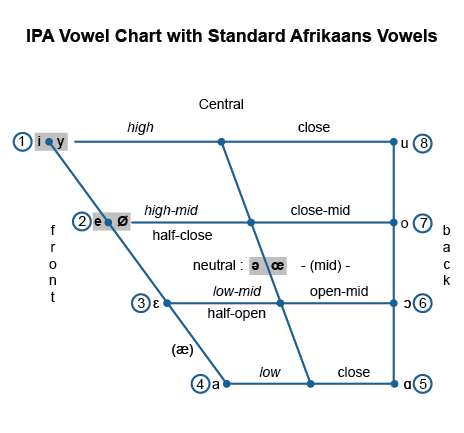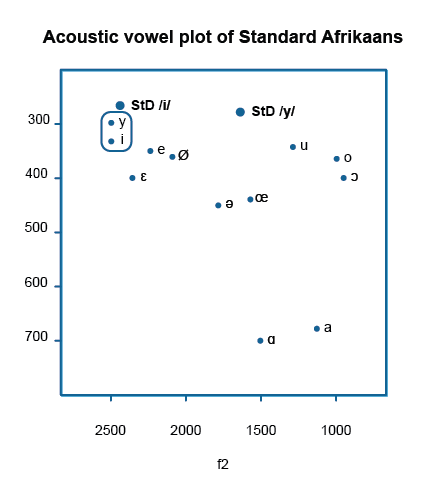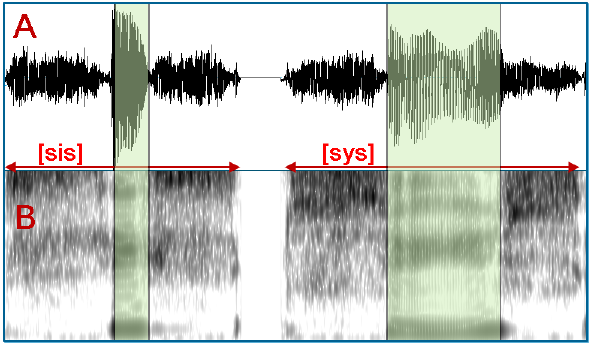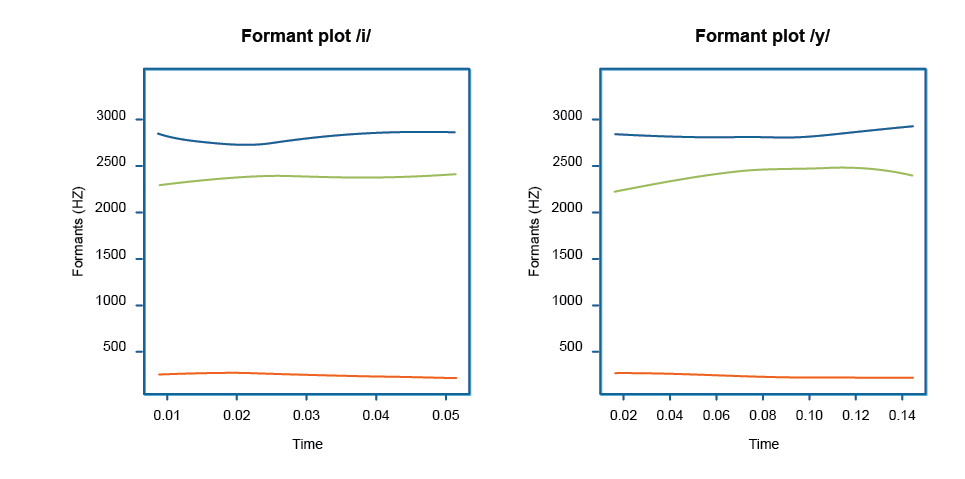- Dutch
- Frisian
- Saterfrisian
- Afrikaans
-
- Phonology
- Segment inventory
- Phonotactics
- Phonological processes
- Phonology-morphology interface
- Word stress
- Primary stress in simplex words
- Monomorphemic words
- Diachronic aspects
- Generalizations on stress placement
- Default penultimate stress
- Lexical stress
- The closed penult restriction
- Final closed syllables
- The diphthong restriction
- Superheavy syllables (SHS)
- The three-syllable window
- Segmental restrictions
- Phonetic correlates
- Stress shifts in loanwords
- Quantity-sensitivity
- Secondary stress
- Vowel reduction in unstressed syllables
- Stress in complex words
- Primary stress in simplex words
- Accent & intonation
- Clitics
- Spelling
- Morphology
- Word formation
- Compounding
- Nominal compounds
- Verbal compounds
- Adjectival compounds
- Affixoids
- Coordinative compounds
- Synthetic compounds
- Reduplicative compounds
- Phrase-based compounds
- Elative compounds
- Exocentric compounds
- Linking elements
- Separable complex verbs (SCVs)
- Gapping of complex words
- Particle verbs
- Copulative compounds
- Derivation
- Numerals
- Derivation: inputs and input restrictions
- The meaning of affixes
- Non-native morphology
- Cohering and non-cohering affixes
- Prefixation
- Suffixation
- Nominal suffixation: person nouns
- Conversion
- Pseudo-participles
- Bound forms
- Nouns
- Nominal prefixes
- Nominal suffixes
- -aal and -eel
- -aar
- -aard
- -aat
- -air
- -aris
- -ast
- Diminutives
- -dom
- -een
- -ees
- -el (nominal)
- -elaar
- -enis
- -er (nominal)
- -erd
- -erik
- -es
- -eur
- -euse
- ge...te
- -heid
- -iaan, -aan
- -ief
- -iek
- -ier
- -ier (French)
- -ière
- -iet
- -igheid
- -ij and allomorphs
- -ijn
- -in
- -ing
- -isme
- -ist
- -iteit
- -ling
- -oir
- -oot
- -rice
- -schap
- -schap (de)
- -schap (het)
- -sel
- -st
- -ster
- -t
- -tal
- -te
- -voud
- Verbs
- Adjectives
- Adverbs
- Univerbation
- Neo-classical word formation
- Construction-dependent morphology
- Morphological productivity
- Compounding
- Inflection
- Inflection and derivation
- Allomorphy
- The interface between phonology and morphology
- Word formation
- Syntax
- Preface and acknowledgements
- Verbs and Verb Phrases
- 1 Characterization and classification
- 2 Projection of verb phrases I:Argument structure
- 3 Projection of verb phrases II:Verb frame alternations
- Introduction
- 3.1. Main types
- 3.2. Alternations involving the external argument
- 3.3. Alternations of noun phrases and PPs
- 3.3.1. Dative/PP alternations (dative shift)
- 3.3.1.1. Dative alternation with aan-phrases (recipients)
- 3.3.1.2. Dative alternation with naar-phrases (goals)
- 3.3.1.3. Dative alternation with van-phrases (sources)
- 3.3.1.4. Dative alternation with bij-phrases (possessors)
- 3.3.1.5. Dative alternation with voor-phrases (benefactives)
- 3.3.1.6. Conclusion
- 3.3.1.7. Bibliographical notes
- 3.3.2. Accusative/PP alternations
- 3.3.3. Nominative/PP alternations
- 3.3.1. Dative/PP alternations (dative shift)
- 3.4. Some apparent cases of verb frame alternation
- 3.5. Bibliographical notes
- 4 Projection of verb phrases IIIa:Selection of clauses/verb phrases
- 5 Projection of verb phrases IIIb:Argument and complementive clauses
- Introduction
- 5.1. Finite argument clauses
- 5.2. Infinitival argument clauses
- 5.3. Complementive clauses
- 6 Projection of verb phrases IIIc:Complements of non-main verbs
- 7 Projection of verb phrases IIId:Verb clusters
- 8 Projection of verb phrases IV: Adverbial modification
- 9 Word order in the clause I:General introduction
- 10 Word order in the clause II:Position of the finite verb (verb-first/second)
- 11 Word order in the clause III:Clause-initial position (wh-movement)
- Introduction
- 11.1. The formation of V1- and V2-clauses
- 11.2. Clause-initial position remains (phonetically) empty
- 11.3. Clause-initial position is filled
- 12 Word order in the clause IV:Postverbal field (extraposition)
- 13 Word order in the clause V: Middle field (scrambling)
- 14 Main-clause external elements
- Nouns and Noun Phrases
- 1 Characterization and classification
- 2 Projection of noun phrases I: complementation
- Introduction
- 2.1. General observations
- 2.2. Prepositional and nominal complements
- 2.3. Clausal complements
- 2.4. Bibliographical notes
- 3 Projection of noun phrases II: modification
- Introduction
- 3.1. Restrictive and non-restrictive modifiers
- 3.2. Premodification
- 3.3. Postmodification
- 3.3.1. Adpositional phrases
- 3.3.2. Relative clauses
- 3.3.3. Infinitival clauses
- 3.3.4. A special case: clauses referring to a proposition
- 3.3.5. Adjectival phrases
- 3.3.6. Adverbial postmodification
- 3.4. Bibliographical notes
- 4 Projection of noun phrases III: binominal constructions
- Introduction
- 4.1. Binominal constructions without a preposition
- 4.2. Binominal constructions with a preposition
- 4.3. Bibliographical notes
- 5 Determiners: articles and pronouns
- Introduction
- 5.1. Articles
- 5.2. Pronouns
- 5.3. Bibliographical notes
- 6 Numerals and quantifiers
- 7 Pre-determiners
- Introduction
- 7.1. The universal quantifier al 'all' and its alternants
- 7.2. The pre-determiner heel 'all/whole'
- 7.3. A note on focus particles
- 7.4. Bibliographical notes
- 8 Syntactic uses of noun phrases
- Adjectives and Adjective Phrases
- 1 Characteristics and classification
- 2 Projection of adjective phrases I: Complementation
- 3 Projection of adjective phrases II: Modification
- 4 Projection of adjective phrases III: Comparison
- 5 Attributive use of the adjective phrase
- 6 Predicative use of the adjective phrase
- 7 The partitive genitive construction
- 8 Adverbial use of the adjective phrase
- 9 Participles and infinitives: their adjectival use
- 10 Special constructions
- Adpositions and adpositional phrases
- 1 Characteristics and classification
- Introduction
- 1.1. Characterization of the category adposition
- 1.2. A formal classification of adpositional phrases
- 1.3. A semantic classification of adpositional phrases
- 1.3.1. Spatial adpositions
- 1.3.2. Temporal adpositions
- 1.3.3. Non-spatial/temporal prepositions
- 1.4. Borderline cases
- 1.5. Bibliographical notes
- 2 Projection of adpositional phrases: Complementation
- 3 Projection of adpositional phrases: Modification
- 4 Syntactic uses of the adpositional phrase
- 5 R-pronominalization and R-words
- 1 Characteristics and classification
- Phonology
-
- General
- Phonology
- Segment inventory
- Phonotactics
- Phonological Processes
- Assimilation
- Vowel nasalization
- Syllabic sonorants
- Final devoicing
- Fake geminates
- Vowel hiatus resolution
- Vowel reduction introduction
- Schwa deletion
- Schwa insertion
- /r/-deletion
- d-insertion
- {s/z}-insertion
- t-deletion
- Intrusive stop formation
- Breaking
- Vowel shortening
- h-deletion
- Replacement of the glide w
- Word stress
- Clitics
- Allomorphy
- Orthography of Frisian
- Morphology
- Inflection
- Word formation
- Derivation
- Prefixation
- Infixation
- Suffixation
- Nominal suffixes
- Verbal suffixes
- Adjectival suffixes
- Adverbial suffixes
- Numeral suffixes
- Interjectional suffixes
- Onomastic suffixes
- Conversion
- Compositions
- Derivation
- Syntax
- Verbs and Verb Phrases
- Characteristics and classification
- Unergative and unaccusative subjects
- Evidentiality
- To-infinitival clauses
- Predication and noun incorporation
- Ellipsis
- Imperativus-pro-Infinitivo
- Expression of irrealis
- Embedded Verb Second
- Agreement
- Negation
- Nouns & Noun Phrases
- Classification
- Complementation
- Modification
- Partitive noun constructions
- Referential partitive constructions
- Partitive measure nouns
- Numeral partitive constructions
- Partitive question constructions
- Nominalised quantifiers
- Kind partitives
- Partitive predication with prepositions
- Bare nominal attributions
- Articles and names
- Pronouns
- Quantifiers and (pre)determiners
- Interrogative pronouns
- R-pronouns
- Syntactic uses
- Adjective Phrases
- Characteristics and classification
- Complementation
- Modification and degree quantification
- Comparison by degree
- Comparative
- Superlative
- Equative
- Attribution
- Agreement
- Attributive adjectives vs. prenominal elements
- Complex adjectives
- Noun ellipsis
- Co-occurring adjectives
- Predication
- Partitive adjective constructions
- Adverbial use
- Participles and infinitives
- Adposition Phrases
- Characteristics and classification
- Complementation
- Modification
- Intransitive adpositions
- Predication
- Preposition stranding
- Verbs and Verb Phrases
-
- General
- Morphology
- Morphology
- 1 Word formation
- 1.1 Compounding
- 1.1.1 Compounds and their heads
- 1.1.2 Special types of compounds
- 1.1.2.1 Affixoids
- 1.1.2.2 Coordinative compounds
- 1.1.2.3 Synthetic compounds and complex pseudo-participles
- 1.1.2.4 Reduplicative compounds
- 1.1.2.5 Phrase-based compounds
- 1.1.2.6 Elative compounds
- 1.1.2.7 Exocentric compounds
- 1.1.2.8 Linking elements
- 1.1.2.9 Separable Complex Verbs and Particle Verbs
- 1.1.2.10 Noun Incorporation Verbs
- 1.1.2.11 Gapping
- 1.2 Derivation
- 1.3 Minor patterns of word formation
- 1.1 Compounding
- 2 Inflection
- 1 Word formation
- Morphology
- Syntax
- Adjectives and adjective phrases (APs)
- 0 Introduction to the AP
- 1 Characteristics and classification of APs
- 2 Complementation of APs
- 3 Modification and degree quantification of APs
- 4 Comparison by comparative, superlative and equative
- 5 Attribution of APs
- 6 Predication of APs
- 7 The partitive adjective construction
- 8 Adverbial use of APs
- 9 Participles and infinitives as APs
- Nouns and Noun Phrases (NPs)
- 0 Introduction to the NP
- 1 Characteristics and Classification of NPs
- 2 Complementation of NPs
- 3 Modification of NPs
- 3.1 Modification of NP by Determiners and APs
- 3.2 Modification of NP by PP
- 3.3 Modification of NP by adverbial clauses
- 3.4 Modification of NP by possessors
- 3.5 Modification of NP by relative clauses
- 3.6 Modification of NP in a cleft construction
- 3.7 Free relative clauses and selected interrogative clauses
- 4 Partitive noun constructions and constructions related to them
- 4.1 The referential partitive construction
- 4.2 The partitive construction of abstract quantity
- 4.3 The numerical partitive construction
- 4.4 The partitive interrogative construction
- 4.5 Adjectival, nominal and nominalised partitive quantifiers
- 4.6 Kind partitives
- 4.7 Partitive predication with a preposition
- 4.8 Bare nominal attribution
- 5 Articles and names
- 6 Pronouns
- 7 Quantifiers, determiners and predeterminers
- 8 Interrogative pronouns
- 9 R-pronouns and the indefinite expletive
- 10 Syntactic functions of Noun Phrases
- Adpositions and Adpositional Phrases (PPs)
- 0 Introduction to the PP
- 1 Characteristics and classification of PPs
- 2 Complementation of PPs
- 3 Modification of PPs
- 4 Bare (intransitive) adpositions
- 5 Predication of PPs
- 6 Form and distribution of adpositions with respect to staticity and construction type
- 7 Adpositional complements and adverbials
- Verbs and Verb Phrases (VPs)
- 0 Introduction to the VP in Saterland Frisian
- 1 Characteristics and classification of verbs
- 2 Unergative and unaccusative subjects and the auxiliary of the perfect
- 3 Evidentiality in relation to perception and epistemicity
- 4 Types of to-infinitival constituents
- 5 Predication
- 5.1 The auxiliary of being and its selection restrictions
- 5.2 The auxiliary of going and its selection restrictions
- 5.3 The auxiliary of continuation and its selection restrictions
- 5.4 The auxiliary of coming and its selection restrictions
- 5.5 Modal auxiliaries and their selection restrictions
- 5.6 Auxiliaries of body posture and aspect and their selection restrictions
- 5.7 Transitive verbs of predication
- 5.8 The auxiliary of doing used as a semantically empty finite auxiliary
- 5.9 Supplementive predication
- 6 The verbal paradigm, irregularity and suppletion
- 7 Verb Second and the word order in main and embedded clauses
- 8 Various aspects of clause structure
- Adjectives and adjective phrases (APs)
-
- General
- Phonology
- Afrikaans phonology
- Segment inventory
- Overview of Afrikaans vowels
- The diphthongised long vowels /e/, /ø/ and /o/
- The unrounded mid-front vowel /ɛ/
- The unrounded low-central vowel /ɑ/
- The unrounded low-central vowel /a/
- The rounded mid-high back vowel /ɔ/
- The rounded high back vowel /u/
- The rounded and unrounded high front vowels /i/ and /y/
- The unrounded and rounded central vowels /ə/ and /œ/
- The diphthongs /əi/, /œy/ and /œu/
- Overview of Afrikaans consonants
- The bilabial plosives /p/ and /b/
- The alveolar plosives /t/ and /d/
- The velar plosives /k/ and /g/
- The bilabial nasal /m/
- The alveolar nasal /n/
- The velar nasal /ŋ/
- The trill /r/
- The lateral liquid /l/
- The alveolar fricative /s/
- The velar fricative /x/
- The labiodental fricatives /f/ and /v/
- The approximants /ɦ/, /j/ and /ʋ/
- Overview of Afrikaans vowels
- Word stress
- The phonetic properties of stress
- Primary stress on monomorphemic words in Afrikaans
- Background to primary stress in monomorphemes in Afrikaans
- Overview of the Main Stress Rule of Afrikaans
- The short vowels of Afrikaans
- Long vowels in monomorphemes
- Primary stress on diphthongs in monomorphemes
- Exceptions
- Stress shifts in place names
- Stress shift towards word-final position
- Stress pattern of reduplications
- Phonological processes
- Vowel related processes
- Consonant related processes
- Homorganic glide insertion
- Phonology-morphology interface
- Phonotactics
- Morphology
- Syntax
- Afrikaans syntax
- Nouns and noun phrases
- Characteristics of the NP
- Classification of nouns
- Complementation of NPs
- Modification of NPs
- Binominal and partitive constructions
- Referential partitive constructions
- Partitive measure nouns
- Numeral partitive constructions
- Partitive question constructions
- Partitive constructions with nominalised quantifiers
- Partitive predication with prepositions
- Binominal name constructions
- Binominal genitive constructions
- Bare nominal attribution
- Articles and names
- Pronouns
- Quantifiers, determiners and predeterminers
- Syntactic uses of the noun phrase
- Adjectives and adjective phrases
- Characteristics and classification of the AP
- Complementation of APs
- Modification and Degree Quantification of APs
- Comparison by comparative, superlative and equative degree
- Attribution of APs
- Predication of APs
- The partitive adjective construction
- Adverbial use of APs
- Participles and infinitives as adjectives
- Verbs and verb phrases
- Characterisation and classification
- Argument structure
- Verb frame alternations
- Complements of non-main verbs
- Verb clusters
- Complement clauses
- Adverbial modification
- Word order in the clause: Introduction
- Word order in the clause: position of the finite Verb
- Word order in the clause: Clause-initial position
- Word order in the clause: Extraposition and right-dislocation in the postverbal field
- Word order in the middle field
- Emphatic constructions
- Adpositions and adposition phrases
The two close (or high) frontvowels of Afrikaans, viz. the unrounded /i/ and the previously called "abnormal" (currently named marked) rounded counterpart /y/, are classified by most Afrikaans phoneticians and phonologists as short (e.g. Le Roux and Pienaar 1927; De Villiers et al. 1981; Combrink and De Stadler 1987; Wissing 2017; Wissing 2014; Coetzee 1989; De Villiers and Ponelis 1987). This is in contrast to the classification of these vowels by Dutch phonologists as being long. Here we handle these two vowels as a pair in order to point out the strong tendency for them to be neutralised with regards to the distinctive feature round.
Where relevant, acoustic vowel information on the Afrikaans as spoken in Genadendal, Western Cape (henceforth abbreviated as GDAfr.), will be provided. It will here be taken as a prototype of coloured Afrikaans CAfr.). Of course there are many other variants of CAfr. The GDAfr. information is based on recordings of a number of aged female speakers of that town that is important in the history of South Africa.
The phonemes /i/ and /u/ are both produced with the tongue body fronted while the tongue tip is down. In the case of /y/ the lips are rounded. Because of pursing of the lips, the front mouth cavity is (slightly) enlarged. In many cases, even in formal speech style, the difference in rounding is minimised to such a degree that the opposition rounded: unrounded is neutralised. Figure 1 shows the idealised position of these two high-front vowels in the context of the IPA vowel chart.

Both alternate sets of tongue height positions are indicated: (high-low)show the height of the tongue in relation to the oral cavity; (open-close) refer to the degree of openness of the mouth during pronunciation. The latter set is used here and elsewhere.
The formant frequencies as well as the temporal values of vowels vary per speaker based on age, gender, speech community, and also according to speech rate and style. Vowel duration as well as quality tends to reduce in rapid speech and in informal style, thus generally becoming shorter and tending in the direction of schwa. In many cases /y/ shows a strong tendency to unround, becoming [i], or near to [i] leading to the neutralisation of the distinction rounded: unrounded (Wissing 2013). Below we provide the formant values of /y/ in its optimal production as rounded vowel of Standard Afrikaans.
The phoneme /i/ is mostly a short vowel phonetically, mostly long before /r/. The /y/ is also usually phonetically short, but in many instances this is not the case, as in the productions provided below in the /s_s/ context. An average duration of 64 ms was measured for the SAfr. speaker's [i] in the phonetic context /s_s/, read in a word-list style. For /y/ it was 146 ms.
The following table and set of figures focus on the formant features of [i] and [y]. Vowel information with respect to Standard Dutch (StD) was found in the description of Dutch [i] and [y] in Taalportaal.
Figure 2 shows the position of /i/ and /u/ relative to the other vowels of Standard Afrikaans.

- The Standard Afrikaans phonemes /i/ and /u/ are encircled; those of Standard Dutch are indicated by the abbreviation StD + /i/. The Afrikaans /i/ and /y/ are situated in the upper-left corner of the chart; corresponding closely to the articulatory close front vowel position in Figure 1.
- While Dutch /y/ is clearly positioned to the right of /i/, indicating a definite rounded quality for the former, this is not the case with Afrikaans' /y/. It might be possible, however, for /y/ to be perceived as (sligthly) rounded on grounds of a notably higher position – its F1 is evidently lower than that of /i/. The greater duration of /y/ might also contribute to the perception of /y/ as rounded or at least different to /i/.
- Interestingly, a situation very similar to that of SAfr. is visible with regard to the /i/ and /y/ of Genadendal-Afrikaans. In this case too /y/ shows a definitely higher F1 value compared to that of /y/, while they exhibit near identical F2 values. The F1-readings of Genadendal Afrikaans /i/ and /y/ are respectively 324 Hz; 278 Hz, and the F2-readings are 2503 Hz; 2436 Hz. A similar difference in vowel duration is found here too, with the /i/ of CAfr. being around 100 ms, and that of /y/ being above 200 ms.
Figure 3 shows the vowel /i/ and /y/ as embedded in the nonsense form /s_s/, in this case sies and suus
| Sound | Sound waves and spectrogram |
 | Figure 3  [click image to enlarge] |
Listen to the pronunciation of the two nonsense words that were used in producing the wave form and the spectrogram.
Specifically due to the extreme shortness of /i/ in the spectrogram above, its F2 is rather unclear. Also, the precise formant tracks are not visible in spectrograms in general. Visibility may be enhanced by extracting such tracks from the acoustic information included in the wave forms of vowels. In this present case, as is depicted in Figure 4, this is rather obscured. Nevertheless, for the sake of completeness of the description of the acoustic characteristics of vowels, such plots will in all cases be included.

Treating /i/ as a short vowel, in contrast to Dutch, is evident in Le Roux and Pienaar (1927), De Villiers et al. (1981), Combrink and De Stadler (1987) and Wissing (2017). It is mostly short phonetically, and also clearly perceivable as such. On the other hand /y/ is generally longer than /i/. Both of them elongate when followed by /r/ in coda position, for example in bier /bir/ [bi:r] beer; muur /myr/ [my:r] wall. This phenomenon is not restricted to /i/ and /y/; /ɛ/ and /ɔ/ in many instances show the same tendency.
Although nasalisation of all Afrikaans vowels has been a distinct characteristic of the vowel system for much of the previous century (cf. Le Roux and Pienaar 1927), it seems to be much less the case in recent years, especially in the speech of younger persons. Practically no evidence is found in coloured varieties, as is evident in the pronunciation of Genadendal Afrikaans speakers. The /i/ commonly nasalises, e.g. diens /dins/ [d ĩ: s]; not many common words exist in this specific phonetic environment (Coetzee 1977).
The phoneme /i/ occurs frequently in both stressed and unstressed syllables and especially in word-final, open-syllable position, as an extremely productive diminutive suffix -ie, -pie, -kie, -tjie and -etjie (pronounced as [iki]). These allomorphs have as equivalents the Dutch allomorphs -je, -pje, -kje, -tje and -etje, all with final schwa (Booij 1995), thus leading to Afrikaans /i/ being a much more frequently occurring phoneme than the Dutch equivalent.
Monomorphemes ending on -ie take the plural form -s in all cases, as is the case with the other short Afrikaans vowels, but unlike words ending on long, stress-bearing /i:/, like orgie > orgieë orgy, and scores of derived words of foreign origin such as mitologie > mitologieë, or fonologie > fonologieë. This fact might be taken as evidence in favour of accepting /i/ as a genuine Afrikaans short vowel.
The frequency of appearance of /y/ is much more restricted. It does, however, occur in a few highly-frequency words such as /u/ /'y/ you, /uur/ /'yr/ hour, /minuut/ /mi.'nyt/ minute, /vuur/ /'fyr/ and /nuus/ /'nys/ news, all of them within closed syllables. Somewhat less frequent words, having /y/ in open syllables, include /individu/ /ən.di.vi.'dy/ individual, /sku/ /'sky/ shy, /skadu/ /'ska.dy/ shadow In some cases /y/ tends to deround, for example skaduwee /ska.dy.ve/ ['ska.də.ve] shadow.
- 1995Allomorfie en paradigmatiekLeuvense Bijdragen84447-464
- 1977Nasalering in Afrikaans.Tydskrif vir Geesteswetenskappe1728-46,
- 1989Uitspraakvariasie in die Afrikaans van die Johannesburgse Bruin gemeenskappe: 'n vergelykende studie.Thesis
- 1987Afrikaanse fonologie.Macmillan
- 1987Afrikaanse fonologie.Macmillan
- 1987Afrikaanse klankleer.Tafelberg
- 1981Nasionale woordeboek.Nasou
- 1981Nasionale woordeboek.Nasou
- 1927Afrikaanse fonetiek.Juta
- 1927Afrikaanse fonetiek.Juta
- 1927Afrikaanse fonetiek.Juta
- 2013Akoestiese ontleding van die vokale van bruin en wit jong, vroulike sorekers van Afrikaans.10
- 2014Die wals van Afrikaanse 'a' met 'l'.Tydskrif vir Geesteswetenskappe54248-266,
- 2017FonologieVan Schaik
- 2017FonologieVan Schaik
